privatehudson
The Ultimate Badass
- Joined
- Oct 15, 2003
- Messages
- 4,821
Tales from the Wild West part one: Kidology
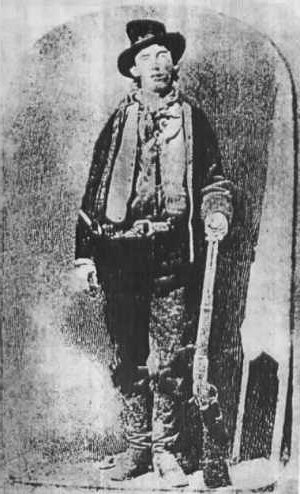
Just about the only proven picture of Billy the kid known to exist. Note that the picture is reversed, something that lead to the myth that he was in fact left handed.
Billy the kid, also known as William Bonney. The name is widely known throughout the USA and beyond as one of the most vicious and infamous gunfighters the Wild West ever saw. The legends surrounding him are as many and varied as that of any gunfighter. This article will attempt to dispel some of the many myths surrounding The Kid and leave us with a picture that is as close as possible to the reality. Billy the Kid, so the legends that began with Ash Upson and Pat Garrets book (Upson wrote the majority of it) tell us was a notorious killer, a crack shot from his early teens, a killer from the age of 12, a gentleman, a gambler, a drinker and a rustler. Garrets work claims that Billy shot down 21 men in 21 years of his life, not counting Indians and Mexicans. It has Billy killing grown men in his teens, tackling 8 Indians single-handedly with a six-shooter and a knife. In the book the myth of The kid is taken to extreme levels, moving Billy onto the same level as any of the era and then some. The reality is somewhat less impressive than this. Before comparing the two though, a brief resume of his life is needed.
His Life
William Henry McCarty was born sometime around either 1860 or 1861, either in New York or Indiana. His mother Catherine was a widow and single mother and he had one brother who was younger than him being born in 1863. His early life is something of a mystery, traces of him are hard to find, though evidence exists that he lived in Indiana in the late 1860s and then Wichita, Kansas in 1870. When his mother was diagnosed with Tuberculosis in 1871 the family moved to warmer climates, first to Santa Fe (where she married William Antrim) and then Silver City in southern New Mexico. Its quite probable that Antrim disliked the two boys and the feeling seemed to be mutual. Billy went by the name Henry (to avoid confusion with his stepfathers name) but still retained the use of McCarty during this period. Then on September 16, 1874, the Kids mother died, and Antrim refused to look after the boys, putting both into separate foster homes.
Abandoned mostly to his own devices, Billy worked washing dishes and waiting on tables in a restaurant during this period, but with no guidance soon fell into the wrong crowd. He befriended one Sombrero Jack and the two rapidly got themselves into minor trouble with the local law. Jack stole some laundry and gave it to Billy to hide, but he was caught with it, the sheriff teaching him a lesson by throwing him in jail. Billy panicked and escaped, fleeing to a foster family who packed him off to Arizona to see Antrim. His stepfather though did not want anything to do with Billy once more. Alone again, Billy wanders the desert areas from ranch to ranch seeking work at each. He did this for two years, along the way learning the tricks of the horse rustling trade from John Mackie before returning to ranch work.
Soon after, at the age of around 16 Billy ran into a gentleman called Frank Windy Cahill, a bully who enjoyed tormenting Billy when they met in the saloon of Camp Grant, Arizona. One day Cahill attacked Billy, knocking him to the ground, pinning him there and proceeded to punch and slap him. Pinned by Cahills greater weight Billy drew his revolver and shot Cahill in the gut. Billy fled the town on the nearest horse, fleeing to New Mexico. Now an outlaw he was unable to get lawful work and met with Jesse Evans, the leader of a gang called the boys which he joined with some reluctance. This one moment changed his career for good.
The boys made their way to Lincoln County where they met up with one James Dolan, currently in a feud with John Tunstall and Alexander McSween. Dolan was the protégé of L G Murphy, and was supported by the Santa Fe ring, a powerful, mafia-like organisation of politicians, lawyers, judges and businessmen in the area. Tunstall had arrived there from England seeking to make even more of his fortune and set himself up in opposition to Murphy and Dolan, but soon fell foul of them both politically and legally. He quickly set himself up with his own gunmen to defend his cause and the beginnings of the Lincoln county war were in place.
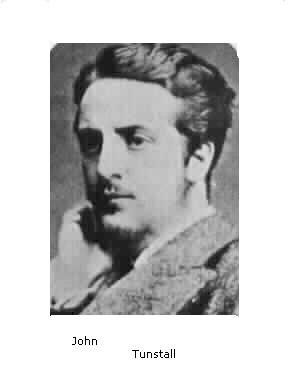
John Tunstall, hardly the middle aged father figure!
The boys along with Billy began to rustle Tunstalls cattle, but a lack of success saw Billy and others caught and jailed. Tunstall though saw something in Billy that few others to date had noticed, and offered him a deal, turn witness against the others in return for his freedom and work for Tunstall. Billy accepted. Billy changed his name again, this time to William H Bonney, but was soon known to his friends in Tunstalls group as the Kid. The feud soon escalated into bloody violence though, Tunstall being gunned down by a lynch-mob come Posse lead by Sheriff Brady and the boys, a fateful event that would once again change Billys life.
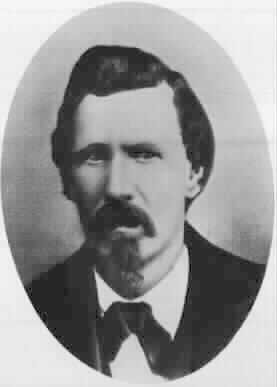
Sheriff Brady, the posse leader that lead the murder of Tunstall
Tunstalls ranch hands reacted by setting up the Regulators for revenge justice against the actions of Brady, the group being lead by Dick Brewer. The first attempts came through warrants and legal action, but with Brady and the legal system biased, these went nowhere. They then took things into their own hands, killing two of the boys in a firefight (plus a regulator they felt was double-crossing them), another Dolan gunman, and then Sheriff Brady. The revenge though cost the regulators dear, warrants were issued for their arrest and they fled, eventually ending up in the temporary sanctuary of the McSween store.
Here they were surrounded by Dolans new sheriff, George Peppin and his posse. McSween, eager to avoid conflict sent a message to the local army commander at Fort Stanton, a Colnel Dudley who duly arrived in force in an attempt to force a stalemate. Unfortunately this was not to last forever, on the 5th day the impatient Peppin ordered the house set on fire, despite knowing that civilians were sheltering inside. In the ensuing confusion, Billy and most of the regulators made a break for it first to draw fire then McSweeny and the civilians tried to escape. In the confusion McSween and 3 men fell dead, most of the regulators escaped though.
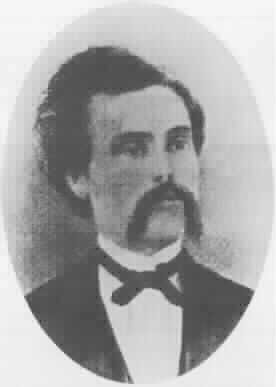
Alexander McSween, partner to Tunstall who died at the end of the siege
Billy then went on the run, with the respectable people in the war on the Tunstall side dead he had no support left. Forced into rustling and gambling to keep alive he eventually heard that Governor Axtell was to be replaced by Lew Wallace, brought in from outside to restore law to the area. Seeing his chance, Billy offered to turn witness against the Dolan faction in return for a pardon. He agreed to a mock imprisonment during the trial in order to achieve this. Unfortunately Wallace's power could not force a pardon against the wishes of prosecutor attorney William Rynerson, who happened to be a member of the Santa Fe ring. The ring influenced events, with those tried from the Dolan faction acquitted. Feeling betrayed as Wallace could not garuntee his safety (William Rynerson was threatening to try him for Brady's murder). Billy escaped once more.
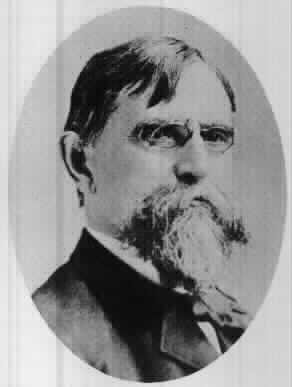
Lew Wallace, author of Ben Hur, important man in this story
He returned to rustling, and during this period earnt from local newspapers, who delighted in demonising him the title "billy the kid". He went back on the run, hanging around Fort Sumner New Mexico and here killed one Joe Grant in self defence. He continued to get into trouble, soon afterwards being surrounded by a posse from White Oaks at a station house. During the stand off, one of the posse accidently killed deputy James Carlyle, a death promptly attributed to Billy of course.
As the Kid dodged the law, Pat Garrett was elected sheriff and made US Marshal to hunt for Billy the Kid. He was familiar with the Kids habits and hideouts, which may show that Garrett may have been a rustler himself or at one time may have ridden with the Kid. During the pursuit for Billy the Kid, Garrett ended up killing two of the Kids closest comrades, Tom OFolliard and Charlie Bowdre. Finally on December 23, 1880 Garrett trapped the Kid and three other gang members at a cabin in Stinking Springs. After a short standoff, Billy the Kid came out and surrendered.
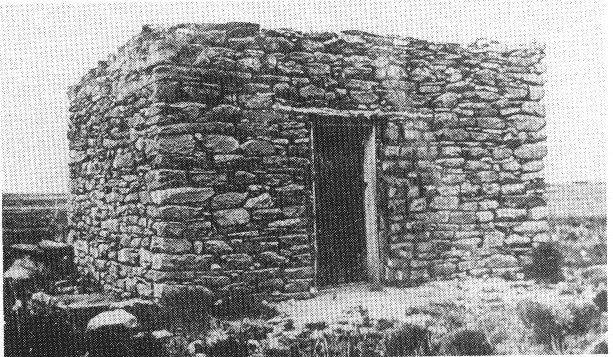
The building at Stinking Springs where Billy and his gang were trapped
Billy the Kid was quickly put on trial in Mesilla and was sentenced to hang for the murder of Sheriff Brady. After his sentence was passed, the Kid was taken to Lincoln to await his hanging. The Kid was shackled and imprisoned in a room in the Lincoln courthouse as two deputies took turns guarding over him. On April 28, 1881 the Kid made his most daring escape (which would also be his last). He overcame one guard and was forced to shoot him to prevent him warning others, then shot the second, Bob Olinger a man he hated. He rode out of Lincoln for the last time and fled to Sumner, his only real home.
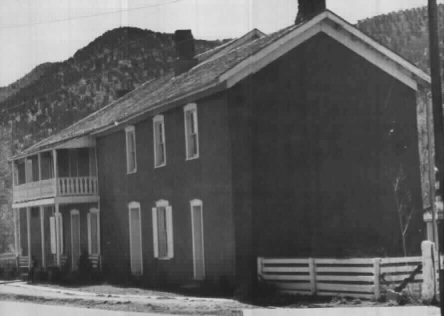
Lincoln Courthouse
The Kid decided to laid low long enough until the law would give up hunting him and he could rustle up some money and leave the territory. By July of 1881, Garrett heard rumors that Billy the Kid was in the Fort Sumner area, so with two deputies he rode into Fort Sumner.
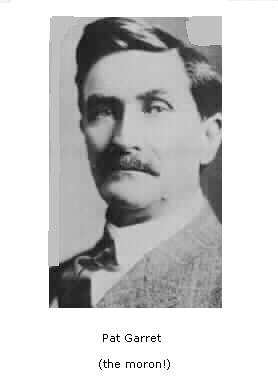
Pat Garrett, the man who shot Billy the Kid, appologies for the rather partisan comments, they're not mine!
On July 14, 1881 just before midnight, Pat Garrett waited till the town was quiet before he slipped into Pete Maxwells room to ask him about Billy the Kid. Garrett was a former employee of Pete Maxwell's and it's possible that Maxwell tipped Garrett off that the Kid was in the area. At that exact moment, the Kid with a knife in hand went to Maxwells house to get some fresh beef for a late steak dinner. As he approached, he saw Garretts two deputies on the porch and since he didn't recognizing the strangers, he backed cautiously into Maxwells room and asked Pete, who are those fellows outside? He got no answer and as he walked towards the bed, he saw Garretts silhouette and started to back away and asked in Spanish, Whose there? Garrett recognized the Kids voice and fired his gun. The bullet pierced the Kid's heart and he fell to the floor. Garrett and Maxwell ran out of the room and huddled outside with the two deputies and waited. They could hear as the Kid gasped for breath and then all was quiet, Billy the Kid was dead
That then is a short story of William H Bonney, alias Billy the Kid, though it leaves out some of what happened to him for reasons of space. Then we have the legends that surround him, which I will now go through below.

Just about the only proven picture of Billy the kid known to exist. Note that the picture is reversed, something that lead to the myth that he was in fact left handed.
Billy the kid, also known as William Bonney. The name is widely known throughout the USA and beyond as one of the most vicious and infamous gunfighters the Wild West ever saw. The legends surrounding him are as many and varied as that of any gunfighter. This article will attempt to dispel some of the many myths surrounding The Kid and leave us with a picture that is as close as possible to the reality. Billy the Kid, so the legends that began with Ash Upson and Pat Garrets book (Upson wrote the majority of it) tell us was a notorious killer, a crack shot from his early teens, a killer from the age of 12, a gentleman, a gambler, a drinker and a rustler. Garrets work claims that Billy shot down 21 men in 21 years of his life, not counting Indians and Mexicans. It has Billy killing grown men in his teens, tackling 8 Indians single-handedly with a six-shooter and a knife. In the book the myth of The kid is taken to extreme levels, moving Billy onto the same level as any of the era and then some. The reality is somewhat less impressive than this. Before comparing the two though, a brief resume of his life is needed.
His Life
William Henry McCarty was born sometime around either 1860 or 1861, either in New York or Indiana. His mother Catherine was a widow and single mother and he had one brother who was younger than him being born in 1863. His early life is something of a mystery, traces of him are hard to find, though evidence exists that he lived in Indiana in the late 1860s and then Wichita, Kansas in 1870. When his mother was diagnosed with Tuberculosis in 1871 the family moved to warmer climates, first to Santa Fe (where she married William Antrim) and then Silver City in southern New Mexico. Its quite probable that Antrim disliked the two boys and the feeling seemed to be mutual. Billy went by the name Henry (to avoid confusion with his stepfathers name) but still retained the use of McCarty during this period. Then on September 16, 1874, the Kids mother died, and Antrim refused to look after the boys, putting both into separate foster homes.
Abandoned mostly to his own devices, Billy worked washing dishes and waiting on tables in a restaurant during this period, but with no guidance soon fell into the wrong crowd. He befriended one Sombrero Jack and the two rapidly got themselves into minor trouble with the local law. Jack stole some laundry and gave it to Billy to hide, but he was caught with it, the sheriff teaching him a lesson by throwing him in jail. Billy panicked and escaped, fleeing to a foster family who packed him off to Arizona to see Antrim. His stepfather though did not want anything to do with Billy once more. Alone again, Billy wanders the desert areas from ranch to ranch seeking work at each. He did this for two years, along the way learning the tricks of the horse rustling trade from John Mackie before returning to ranch work.
Soon after, at the age of around 16 Billy ran into a gentleman called Frank Windy Cahill, a bully who enjoyed tormenting Billy when they met in the saloon of Camp Grant, Arizona. One day Cahill attacked Billy, knocking him to the ground, pinning him there and proceeded to punch and slap him. Pinned by Cahills greater weight Billy drew his revolver and shot Cahill in the gut. Billy fled the town on the nearest horse, fleeing to New Mexico. Now an outlaw he was unable to get lawful work and met with Jesse Evans, the leader of a gang called the boys which he joined with some reluctance. This one moment changed his career for good.
The boys made their way to Lincoln County where they met up with one James Dolan, currently in a feud with John Tunstall and Alexander McSween. Dolan was the protégé of L G Murphy, and was supported by the Santa Fe ring, a powerful, mafia-like organisation of politicians, lawyers, judges and businessmen in the area. Tunstall had arrived there from England seeking to make even more of his fortune and set himself up in opposition to Murphy and Dolan, but soon fell foul of them both politically and legally. He quickly set himself up with his own gunmen to defend his cause and the beginnings of the Lincoln county war were in place.

John Tunstall, hardly the middle aged father figure!
The boys along with Billy began to rustle Tunstalls cattle, but a lack of success saw Billy and others caught and jailed. Tunstall though saw something in Billy that few others to date had noticed, and offered him a deal, turn witness against the others in return for his freedom and work for Tunstall. Billy accepted. Billy changed his name again, this time to William H Bonney, but was soon known to his friends in Tunstalls group as the Kid. The feud soon escalated into bloody violence though, Tunstall being gunned down by a lynch-mob come Posse lead by Sheriff Brady and the boys, a fateful event that would once again change Billys life.

Sheriff Brady, the posse leader that lead the murder of Tunstall
Tunstalls ranch hands reacted by setting up the Regulators for revenge justice against the actions of Brady, the group being lead by Dick Brewer. The first attempts came through warrants and legal action, but with Brady and the legal system biased, these went nowhere. They then took things into their own hands, killing two of the boys in a firefight (plus a regulator they felt was double-crossing them), another Dolan gunman, and then Sheriff Brady. The revenge though cost the regulators dear, warrants were issued for their arrest and they fled, eventually ending up in the temporary sanctuary of the McSween store.
Here they were surrounded by Dolans new sheriff, George Peppin and his posse. McSween, eager to avoid conflict sent a message to the local army commander at Fort Stanton, a Colnel Dudley who duly arrived in force in an attempt to force a stalemate. Unfortunately this was not to last forever, on the 5th day the impatient Peppin ordered the house set on fire, despite knowing that civilians were sheltering inside. In the ensuing confusion, Billy and most of the regulators made a break for it first to draw fire then McSweeny and the civilians tried to escape. In the confusion McSween and 3 men fell dead, most of the regulators escaped though.

Alexander McSween, partner to Tunstall who died at the end of the siege
Billy then went on the run, with the respectable people in the war on the Tunstall side dead he had no support left. Forced into rustling and gambling to keep alive he eventually heard that Governor Axtell was to be replaced by Lew Wallace, brought in from outside to restore law to the area. Seeing his chance, Billy offered to turn witness against the Dolan faction in return for a pardon. He agreed to a mock imprisonment during the trial in order to achieve this. Unfortunately Wallace's power could not force a pardon against the wishes of prosecutor attorney William Rynerson, who happened to be a member of the Santa Fe ring. The ring influenced events, with those tried from the Dolan faction acquitted. Feeling betrayed as Wallace could not garuntee his safety (William Rynerson was threatening to try him for Brady's murder). Billy escaped once more.

Lew Wallace, author of Ben Hur, important man in this story
He returned to rustling, and during this period earnt from local newspapers, who delighted in demonising him the title "billy the kid". He went back on the run, hanging around Fort Sumner New Mexico and here killed one Joe Grant in self defence. He continued to get into trouble, soon afterwards being surrounded by a posse from White Oaks at a station house. During the stand off, one of the posse accidently killed deputy James Carlyle, a death promptly attributed to Billy of course.
As the Kid dodged the law, Pat Garrett was elected sheriff and made US Marshal to hunt for Billy the Kid. He was familiar with the Kids habits and hideouts, which may show that Garrett may have been a rustler himself or at one time may have ridden with the Kid. During the pursuit for Billy the Kid, Garrett ended up killing two of the Kids closest comrades, Tom OFolliard and Charlie Bowdre. Finally on December 23, 1880 Garrett trapped the Kid and three other gang members at a cabin in Stinking Springs. After a short standoff, Billy the Kid came out and surrendered.

The building at Stinking Springs where Billy and his gang were trapped
Billy the Kid was quickly put on trial in Mesilla and was sentenced to hang for the murder of Sheriff Brady. After his sentence was passed, the Kid was taken to Lincoln to await his hanging. The Kid was shackled and imprisoned in a room in the Lincoln courthouse as two deputies took turns guarding over him. On April 28, 1881 the Kid made his most daring escape (which would also be his last). He overcame one guard and was forced to shoot him to prevent him warning others, then shot the second, Bob Olinger a man he hated. He rode out of Lincoln for the last time and fled to Sumner, his only real home.

Lincoln Courthouse
The Kid decided to laid low long enough until the law would give up hunting him and he could rustle up some money and leave the territory. By July of 1881, Garrett heard rumors that Billy the Kid was in the Fort Sumner area, so with two deputies he rode into Fort Sumner.

Pat Garrett, the man who shot Billy the Kid, appologies for the rather partisan comments, they're not mine!
On July 14, 1881 just before midnight, Pat Garrett waited till the town was quiet before he slipped into Pete Maxwells room to ask him about Billy the Kid. Garrett was a former employee of Pete Maxwell's and it's possible that Maxwell tipped Garrett off that the Kid was in the area. At that exact moment, the Kid with a knife in hand went to Maxwells house to get some fresh beef for a late steak dinner. As he approached, he saw Garretts two deputies on the porch and since he didn't recognizing the strangers, he backed cautiously into Maxwells room and asked Pete, who are those fellows outside? He got no answer and as he walked towards the bed, he saw Garretts silhouette and started to back away and asked in Spanish, Whose there? Garrett recognized the Kids voice and fired his gun. The bullet pierced the Kid's heart and he fell to the floor. Garrett and Maxwell ran out of the room and huddled outside with the two deputies and waited. They could hear as the Kid gasped for breath and then all was quiet, Billy the Kid was dead
That then is a short story of William H Bonney, alias Billy the Kid, though it leaves out some of what happened to him for reasons of space. Then we have the legends that surround him, which I will now go through below.

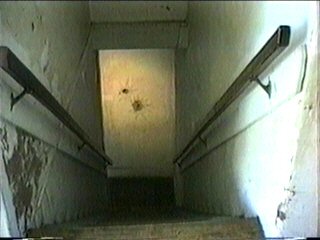
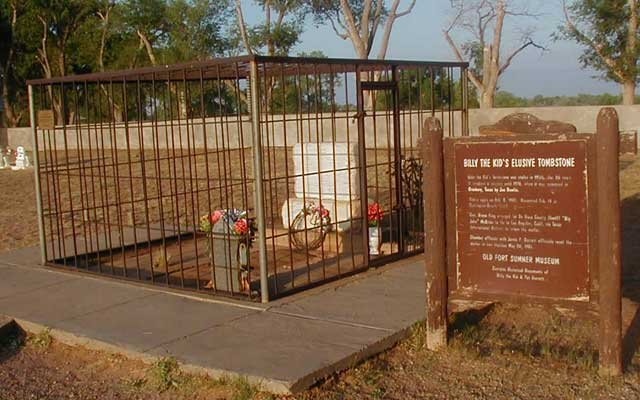


 You are now promoted to corporal!
You are now promoted to corporal! 

